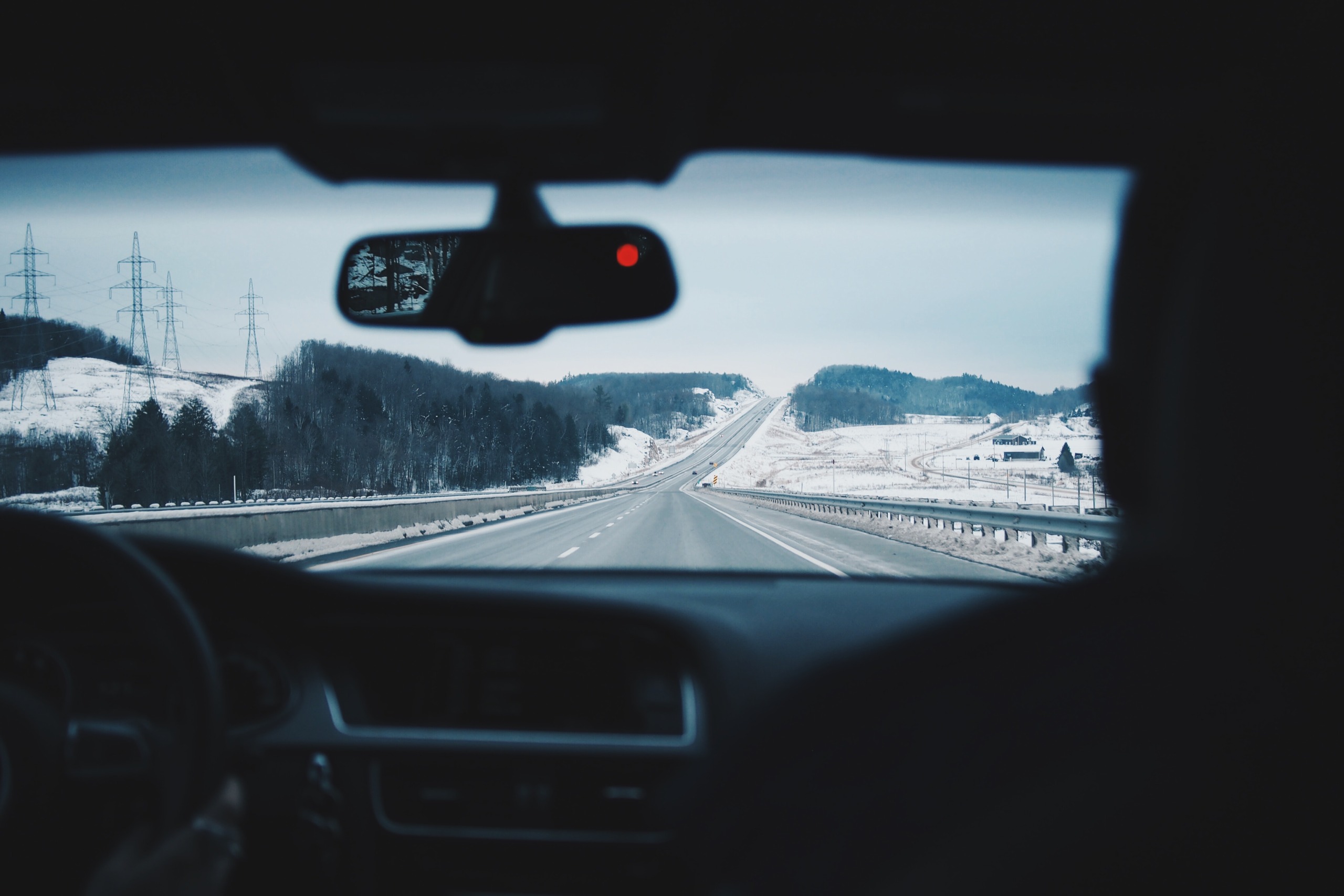Driving in the wintertime can be intimidating. But if you know the right techniques for driving safely and have made sure your car is properly prepared for chilly weather, you’ll have less to worry about. Below, we’ve put together a complete guide for winterizing your car.
Routine maintenance
First things first. When you’re taking care of your car, it’s important to handle the basics first — and that means routine maintenance. Checking the levels of fluids like your motor oil, radiator coolant, power steering fluid, wiper fluid, and brake fluid is a great idea no matter the season.
Wash and wax car
Winter can be tough on your car’s exterior — as you scrape ice off the sides of your car and salt traces from the road build-up on your car’s exterior, the paint job can easily be scratched or damaged. Washing your car and applying a coat of wax before the cold weather sets in can help minimize some of these problems.
Make sure your tires will carry you through the snow
When it comes to wintry driving conditions, safety is all about your tires. Here are a few things you can do to winterize your tires:
Check your tire pressure and tread
As the temperature drops, your tires will naturally lose pressure, which means you’ll need to keep an eye on your tire pressure a little bit more in the winter. A flat tire can lead to a loss of traction, which is especially dangerous in icy conditions.
Make the switch to snow tires if necessary
Most of the time, an all-season tire in good shape will serve your car well in the wintertime. However, if you’re looking for peak performance or live in a region that routinely experiences severe winter weather and temperature, it can be a good idea to upgrade to winter tires.
Get your car serviced for winter conditions
It’s a great idea to think ahead and have your car serviced for winter conditions before the weather gets too cold. Here’s what that will entail.
Inspect your brakes, lights, radio, and battery
Winter can be tough on batteries, and if your battery is already in subpar shape, it’s in greater danger of breaking down. Ideally, you’ll need a battery at or above 600 CCA to stay safe in the wintertime. Your auto care provider can check your battery and recommend if it needs a change.
Similarly, it’s a great idea to inspect your brakes. Cold weather won’t really impair them, but you’ll want to make sure they’re in top working order for any icy roads you might encounter. The same goes for your lights and radio.
Change oil, antifreeze, and coolant
Cold temperatures can make the oil in your engine flow more slowly, putting strain on your car. So getting an oil change and making sure your car is working with the freshest oil is a great idea.
When it comes to your cooling system, you’ll want a ratio of between 50/50 and 70/30 antifreeze to water. If you’re unsure what ratio you’re currently using, it’s not a bad idea to flush the radiator and refresh its supply of fluid.
Test belts and hoses
Your belts and hoses aren’t in any specific danger from the cold, but if they do experience problems in the wintertime you can find yourself stuck in the middle of nowhere. In other words, play it safe and give them a once over.
Visibility is key!
If you can’t see where you’re going, it won’t matter how well you’ve winterized the rest of your car. Here are some tips for making sure your windshield and windows stay as clear as possible.
Windshield wipers and washer fluid
Standard windshield wipers will often get the job done in winter, but upgrading to winter wipers can help better combat frost and snow build-up on your windshield, since they’re made with a thicker rubber strip.
You’ll also want to keep a better eye on your windshield wiper fluid in the winter, as it tends to be used up faster during the cold months. Aim to refill your reservoirs with a low-temperature formula, or add washer fluid antifreeze along with the standard washer fluid.
Clear your windshield of snow, ice, and frost before driving
Before you drive anywhere, make sure your windows and windshield are entirely clear of snow, ice, and frost. You can do this with an ice scraper, by using the car’s built-in defroster system, or several other methods. If you’re in a rush to get on your way, check out our guide on how to quickly defrost car windows.
Be prepared!
Being prepared is maybe the most important part of winterizing your car. Keep in mind that if your car stalls out in winter conditions, you should try your best not to leave your car. Similarly, don’t run your car continuously, but leave it on only long enough to get the cab warm, and then shut it off. Below, you’ll find a few other tips for staying prepared.
Pack a winter emergency kit
It’s a great idea to have a winter emergency kit stowed away in your trunk. You should feel free to add whatever non-perishable goods and items you think you might need in an emergency, but here’s a great list of recommendations to get you started:
- Flashlight with batteries
- Ice scraper
- Extra warm clothing (hats, socks, sweaters, blankets)
- Matches
- First aid kit
- Emergency flares
- Non-perishable food and beverages
- Jumper cables
- Shovel
- Extra antifreeze
- Portable phone charger
- Rock salt or sand
- Neon flag
- Tire chains
Keep the gas half full
Play it safe and make sure you’re filling up your tank whenever you get the chance. For one thing, if you do get stuck somewhere, you’ll have plenty of gas to keep the engine running and the cab warm. On a technical level, the fuller your tank, the less likely you are to experience gas line freeze-ups, which are rare but can still seriously slow you down.
Learn how to drive in winter conditions
Make sure you’re aware of the best tips and techniques for driving in winter conditions. These include removing snow and ice from your vehicle before you drive off, being careful to accelerate and decelerate slowly, avoiding cruise control, and generally driving slower than you usually do while accounting for the extra travel time this will add to your trip. Thinking about staying close by? No sweat, we’ve got some winter activities lined up for you, whether you are going out or staying home. If you are leaving for a little bit, be sure you’ve prepared your home and car for vacation.

 Get it on Google Play
Get it on Google Play